Managing social media can be overwhelming, to say the least. There are a ton of moving parts. But – there is no denying in a post-COVID 2022 world, that it is something most small businesses need to think about.
With every hindrance and nuance that comes with social media also comes with a plethora of reasons why it’s great:
- It can create an emotional connection with customers and establish customer loyalty.
- Social media creates social proof credibility in consumers’ minds, especially if your target demographic is on the younger end of the spectrum.
- It will elevate your company, making a name for themselves in the industry.
- Promoting your business will help raise awareness (leads) which will eventuate to increased sales.
- Social media is one of the (if not the most) inexpensive way to reach audiences who may not be familiar with the company or product that they offer.
So what now? If you want to be successful in social media then you need to do more than just publish your content and hope that people will see it. In order to leverage your social platforms there are few things that you can do:
1. Content plan
The basis of any good social media content is having a solid content plan. In your content plan you should decide on a few key things:
- Posting frequency – how often you want to post to each platform (1-3 times a week)
- Original content vs Curated content – decide at what balance you would like to make original content and content that is reshared from users of your product/services or other similar businesses to you
- Content Pillars – When discussing the social media platforms with my clients we set ‘content pillars’ (about 4-5) as a bare minimum and make sure our content adheres to one of these pillars. This also acts as a guide you can continuously refer to when you are stuck on what to post.
For example, a business that sells health food items targeted toward individuals who want to lose weight or those that want new foods to supplement their healthy lifestyle. Their content pillars may be:
- Education – Content that highlights the health benefits of the products, ingredient highlights
- User-generated content – Before/after weight loss photos of customers, customers eating/using their products
- Product – Professional photography of products, showcasing new products
- Memes/pop culture – Making graphics of products based on trending topics or memes
2. Create a Scheduled Content Calendar
You should be at least a week ahead of your social media posts and have 2-3 posts a week if possible. A content calendar will give you a high-level view of all your business branding or ‘aesthetic’. Essentially the first impression potential and current customers have.
Once you’ve developed a content calendar, take advantage of inexpensive (even free) tools out there such as Planoly or Later. These tools make it easy to schedule content so if you only have a few hours a week to devote to social media, you can schedule all content for that week and not have to think about it again.
3. Schedule in Bulk
Scheduling content in bulk will save you a lot of time, I suggest doing it in a month’s increment. A solid 1-2 hours is sufficient enough to schedule your content, try blocking off the same time every 2 weeks or on a monthly basis.
4. Hashtag Strategy
Creating a document (or even on your Notes app) containing relevant hashtags for your business is an easy way to expand your reach beyond just your immediate followers. By using hashtags you can start to tap into and engage with new conversations on social media. Hashtags allow social media sites and users to categorise content, in addition to making your social posts more discoverable.
I recommend having 4-5 categories with at least 10-15 hashtags under each. For example: You are posting a picture of customer using your product or service you would have a category for “Product” and under it will be things such as #smallbusiness #perthisok #supportlocal. If you post a quote and have a category for “Quotes” you would have hashtags such as #motivationmonday #inspiration etc.
Having these hashtags on hand will save you a lot of time as you can simply copy and paste for each appropriate post category.
5. Visuals!
We humans are visual creatures, and social media is a reflection of that. However, finding images that are high quality and adhere to your business’s image can be tough. But more often than not, it’s often the most important aspect of creating good social content. Don’t have the money to shell out on Photoshop? No problem. At Lumos Marketing we absolutely LOVE Canva – an absolute god-sent, especially for small business owners who are a little be design-impaired. Social media is built on the basis of first impressions and the best way to do that is to create an aesthetically appealing and cohesive feed.
Below are examples of curated Instagram feeds from Keep Keto and Brightside Coffee and how from a quick glance give an impression of an enjoyable and enticing aesthetic, on top of it following a reoccurring theme of specific posts and content types.

No matter the size (big or small) or stage (stating out or a veteran) your business is in, the digital landscape – particularly social media – shows no means of slowing down. Your social media presents an effective way to boost your leads and convert them into customers. The digital world is your oyster!
About the Author:
Amy Miocevich is an Australian author of Very Good Marketing, director of her company Lumos Marketing and a mum. Amy has a plethora of business knowledge and experience helping individuals across all industries over her professional career. She has a deep and innate passion to help small businesses achieve their Big Hairy Audacious Goals, whatever they may be. When Amy isn’t busy working or waking up at 5 am to run, she is probably eating ramen or wanting to eat ramen. Say hi to Amy at amy@lumosmarketing.com.au.










